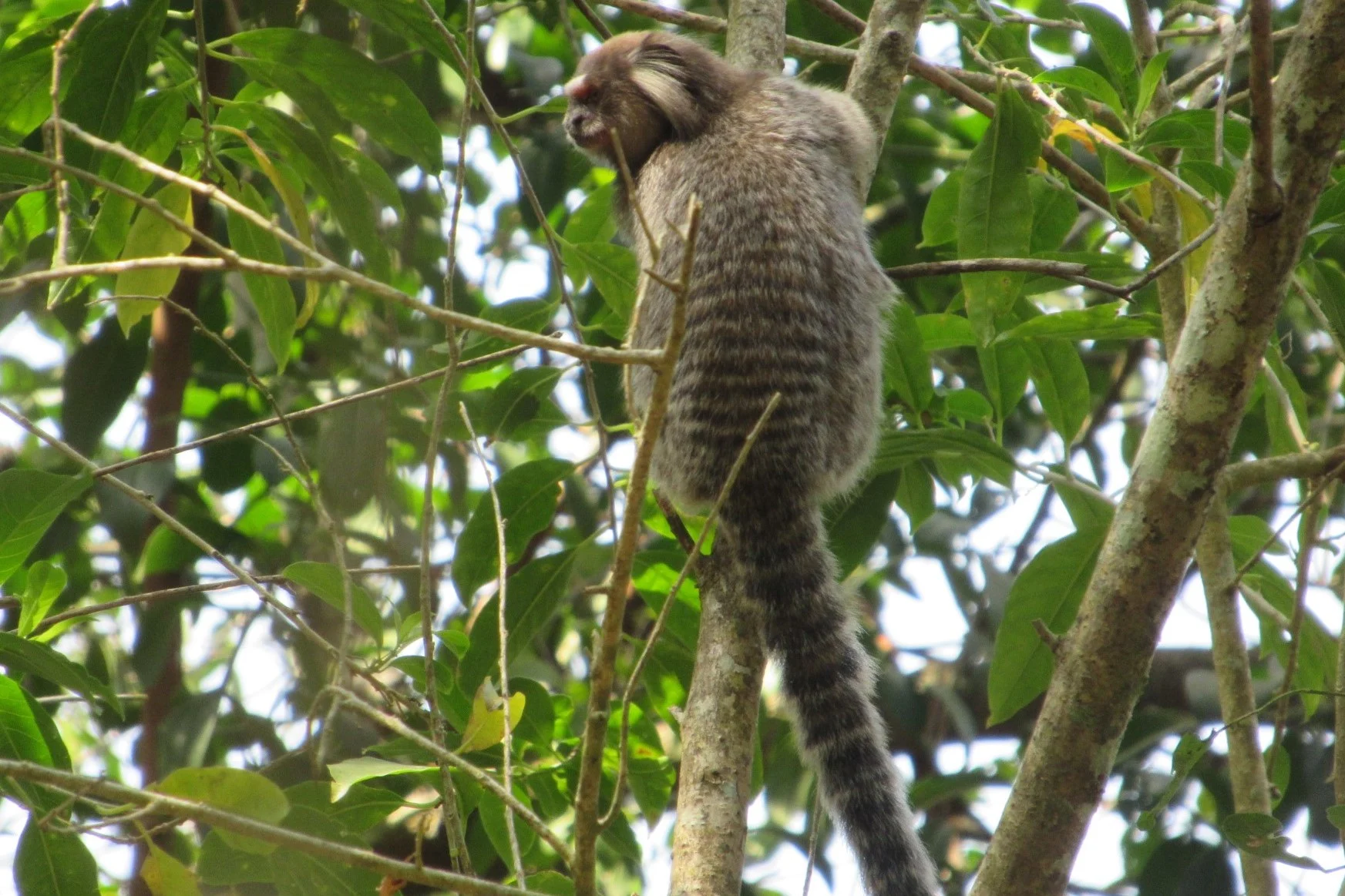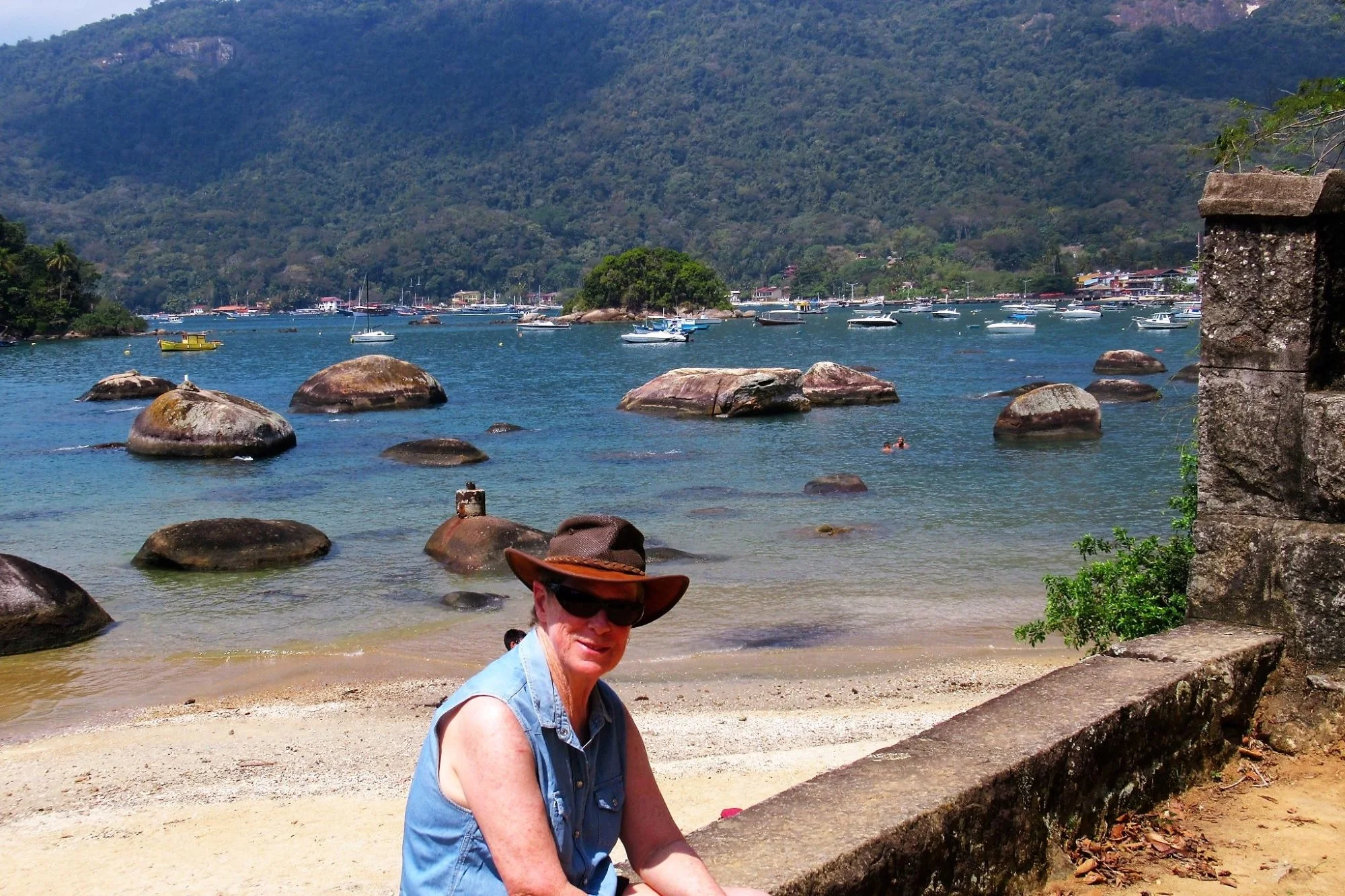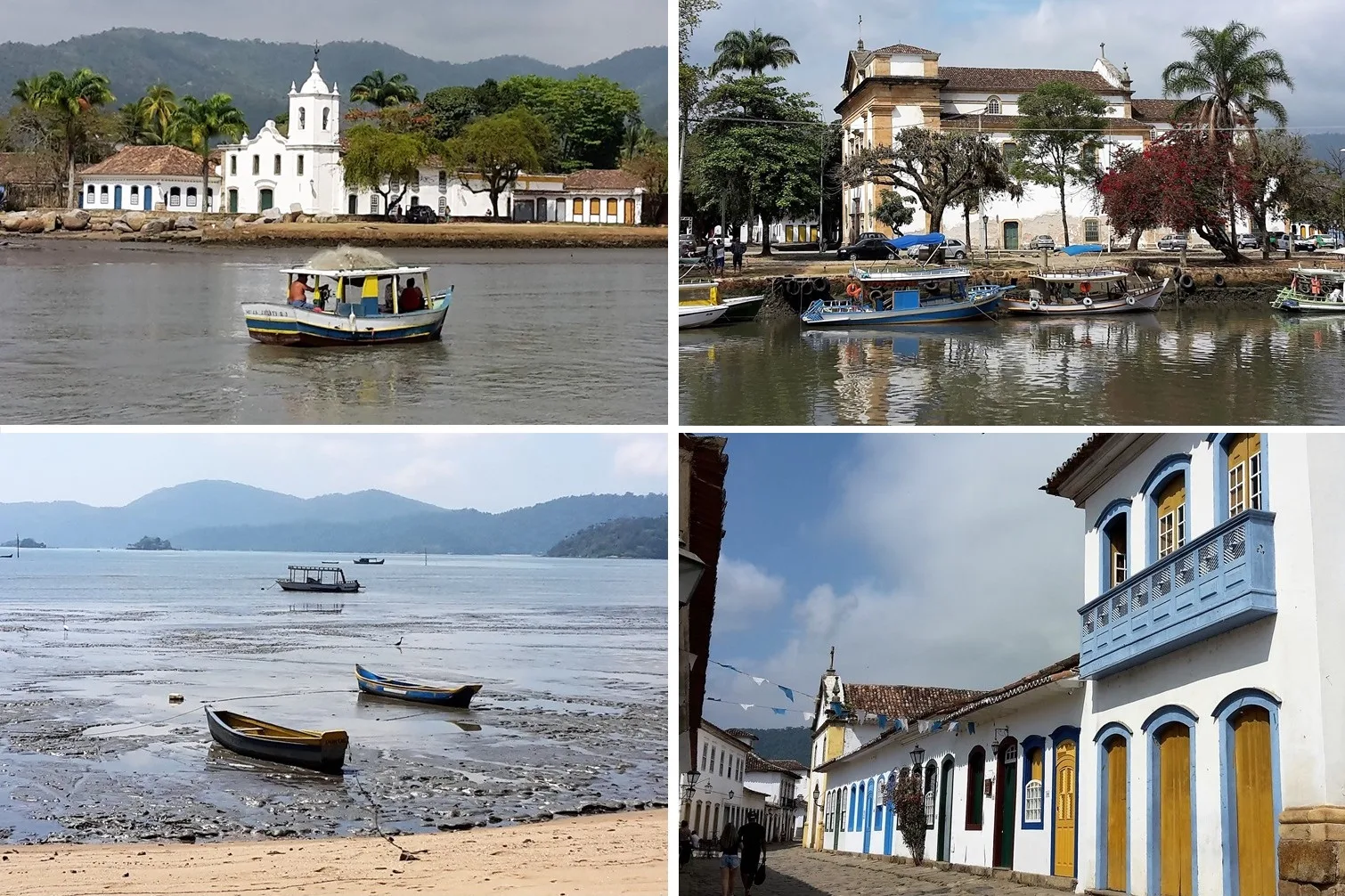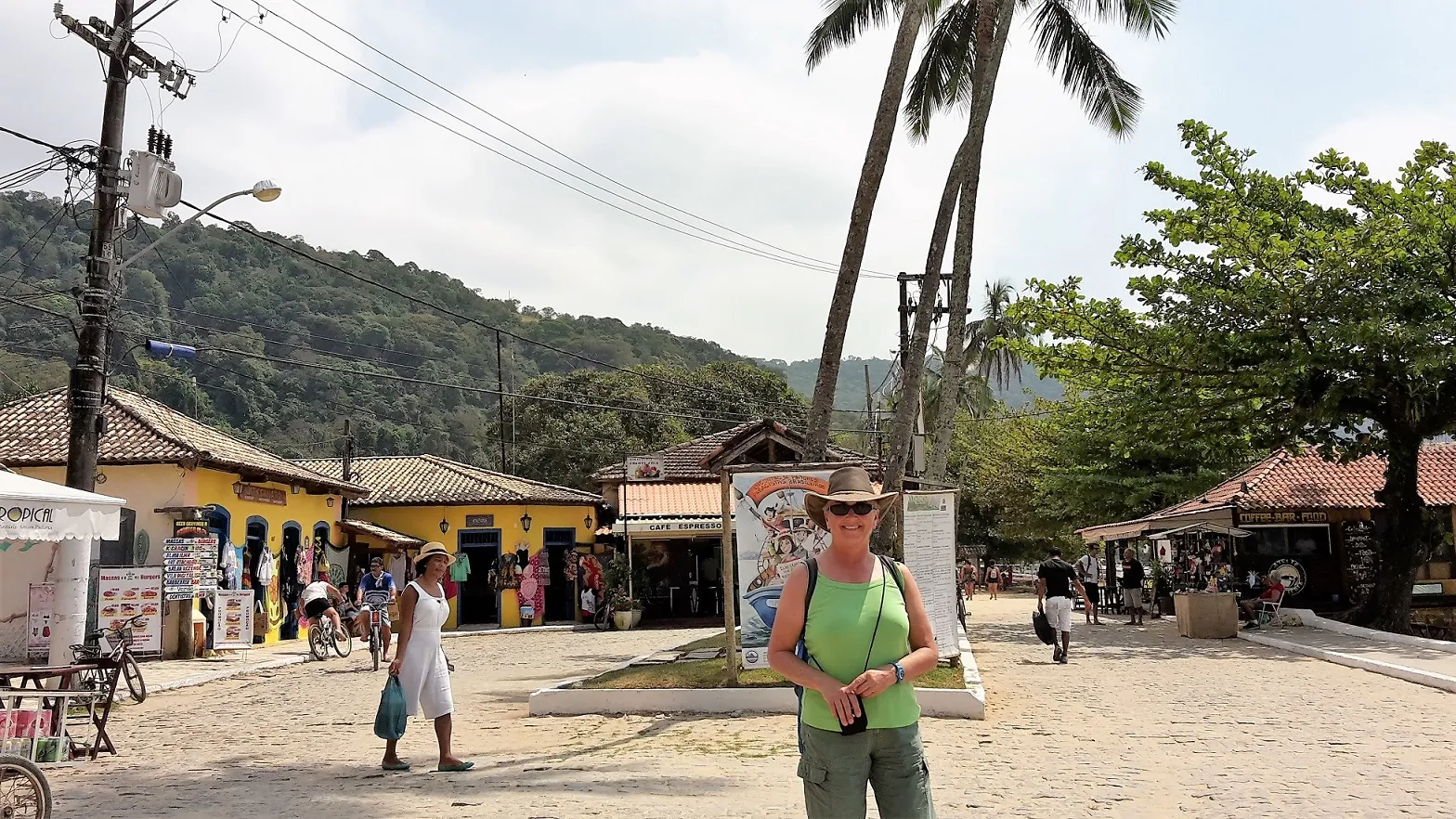Leaving the fabulous Rio de Janeiro, we headed
for the island called Ilha Grande (Big Island), off the Brazilian coast south of Rio. It
is known as one of Brazil’s most beautiful places.
Faced with finding multiple taxis, two bus rides and a
boat to get there, we instead used Easy Transfer. They picked us up at our Rio
hotel, and took us directly to their own boat to get us to the island.
Happily, the ferry delivered us to the end of the island where our pousada (guest house) was located.
There were no footpaths or roads there, so we had to lug and drag our suitcases about 500 metres along the beach in soft sand.
Puffing like crazy after this exertion, we found our accommodation, the lovely Pousada Ancoradouro (Golden
Anchor), right on the beachfront, and were delighted to find that our room had a
balcony that looked right out over the beach.
The beaches here have lovely golden sand, and
because we were in a sheltered bay, there were gentle little waves.
Later, we walked along the beach finding
several restaurants with tables arranged on the sand. Selecting a water-side table, we ordered then received our meals. But each was sized to share between two
people (we realised too late), and both were expensive.
Not to be deterred however, we
enjoyed it, and had many more delicious meals on the beach while we were there. It was wonderful.
Our favourite meal was the local
speciality of fish and banana stew, which was very delicious.
Our village, Vila Abrão, consisted of one main street with little
side streets lined with small houses, numerous pousadas, some touristy shops,
and several small food shops.
There are no cars on the island, and
everything has to be bought in by boat, so living there is expensive.
We did some lovely walks in both directions from our pousada,
and found numerous delightful little beaches full of people enjoying the sun.
 |
| Tiny marmoset monkey in the forest of Ilha Grande, Brazil |
On one walk, we saw the ruins of an old jail
where some of the most dangerous criminals in Brazil were once kept, and which
is now teeming with tiny marmoset monkeys. We also saw an aqueduct that was built in
1893, out of stones carved by slaves.
The next day we decided to walk to Palmas
Beach on the other side of the island. This involved a long, very hot trek up through
the native forest, then a steep walk down over many tree roots, to the beach.
After walking along and exploring the beach, we stopped at a cute café for burgers,
fries and a beer.
Boy did it taste good, sitting at a table on the sand, under an umbrella, having our feet lapped by the encroaching waves.
We contemplated catching a water taxi back but
none were available until a lot later in the day. So we walked back arriving at
our pousada rather hot and tired, but pleased we had done it.
 |
| Leigh on Ilha Grande, Brazil |
Ilha Grande was a very easy place to spend
some time. We really felt that we had a good combination of delightful relaxation and some strenuous exercise.
A few days later, we carried our suitcases
back over the thick sand to the Ilha Grande wharf – but one case between two of us this time.
We were going to catch the ferry back to the mainland then get a minivan to Paraty, our next stop. Paraty is promoted as one of Brazil’s most beautiful towns and we were looking forward to spending a few days there.
 |
| The port at Paraty, Brazil |
We soon arrived at the wee port of Paraty, amid its colourful tourist and fishing boats. We'd used Easy Transfer again, so from the port, we were taken to the front door of our accommodation at Pousada Villaggio.
We were a short walk away from Paraty's historic old town, and were soon walking out to explore it. Everything in Paraty is close so it's very easy to get around.
And it is very beautiful. It's full of quaint and colourful buildings that have interesting, multi-hued borders, and windows. The colonial architecture has been preserved unchanged for 250 years or more, and the locals seem, justifiably, very proud of it. We loved walking around there.
We ate in the old town every night, and for one meal we had a fantastic
Angus beef rib. It was such beautifully tender and tasty meat on a huge, really
huge (40 cm), rib bone. We shared the one rib because it was so big!
The streets are cobbled with very large and differing shaped stones. They are definitely tricky to walk on, but it meant that it was too rough to drive on and so was car-free. However, you do hear the friendly clip-clop and clack of a donkey and cart from time to time.
The town is bordered by two rivers and the
sea with a main canal running through the town. The rivers and canal are lined with brightly painted boats that compete for tourist
business.
The waterways are very tidal, and when
the tide is low, the boats are stranded on very sticky looking mud, which is rather
smelly. However, this doesn’t detract from the charm of the place. It is very lovely.
The old town has an interesting and historic system of street cleaning. When the seawater rises every month, the water enters the old town through special openings in the seawall.
Then, in the old days, as the water receded it took the rubbish with it. Now-days the rubbish is dealt with differently, but it still floods. The water is shallow and the locals use little bridges or wooden beams to span the flooded streets.
In those old days, Paraty was the main port where gold arrived via Brazil's 'gold route' (for example, from Ouro Preto where we recently visited). It was then shipped from Paraty to Portugal.
 |
| Pretty Paraty |
The port, the buildings, the boats, and the surrounding area, made a great place for us to relax and sightsee. However, a few days later, it was time to move on again.
This time we are catching a bus to São Sebastião, in order to get to Ilha Bela (Beautiful Island).
The above blog is part of our 4-month tour of South
America. The first blog on this tour is called "Buenos Aires here we come".








